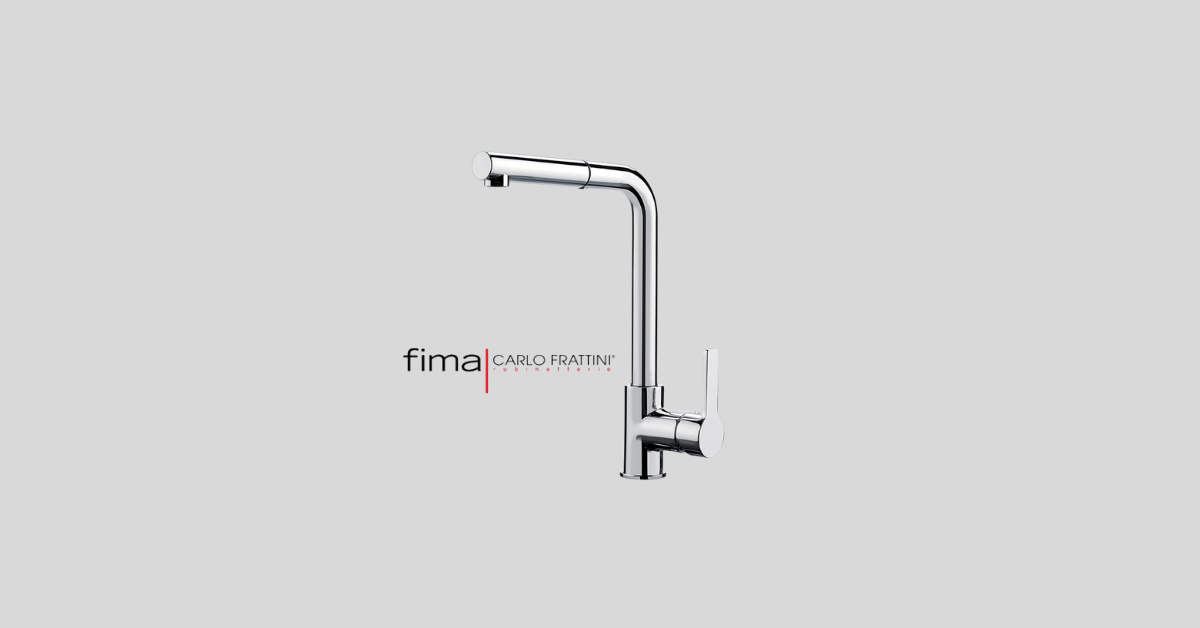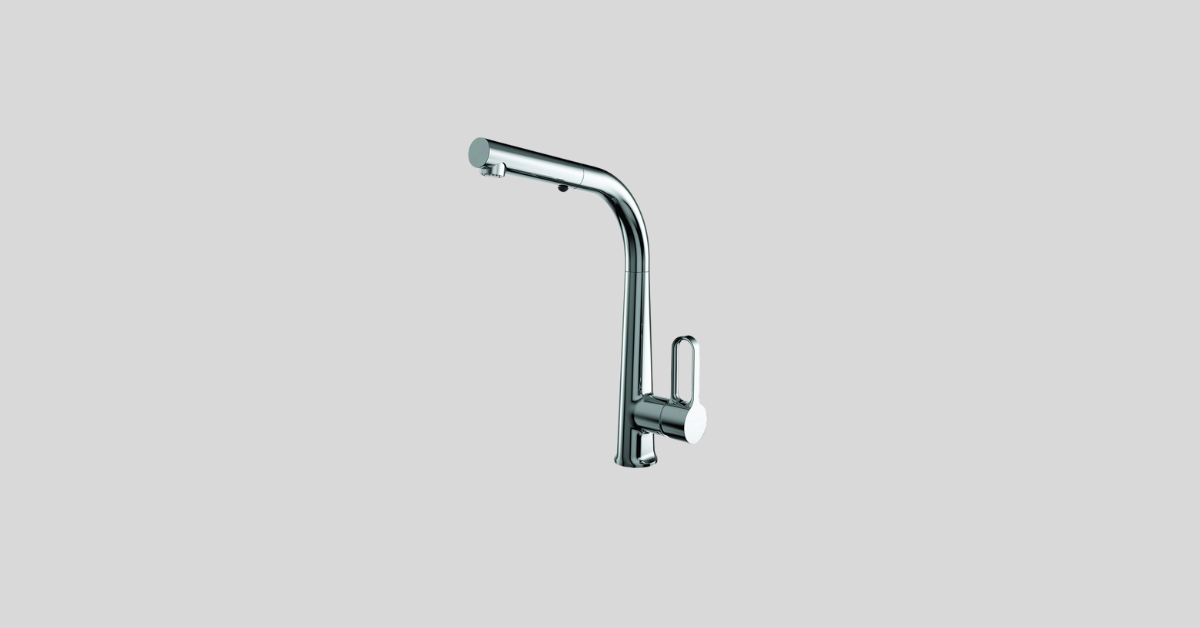Common Problems With Kitchen Faucets And How To Fix Them
Posted on Oct 14, 2024

Working in the kitchen can be chaos sometimes, but thank god for faucets! Keeping the kitchen clean and tidy has become so much easier. A functional faucet is a must for every kitchen, whether you use it for food preparation, rinsing dishes and vegetables or filling up pots. However, like most products, even the best faucets can develop issues from time to time.
It is important to fix all these minor issues on time to avoid the problems from accumulating and leading to expensive repairs. Well, in this blog, you will learn some of the possible issues that you are likely to encounter with a kitchen faucet and probable ways to sort the problem out.
Problem 1: Leaking Faucet
One of the problems that affects most kitchen faucets is leakage. Depending on where you stand, you may see water drooling from the spout or spreading around the base of the faucet. Besides the water that is getting wasted, it can damage your sink area over time if you do not take care of it properly.
Causes:
Several factors can cause a faucet to leak:
1. Worn-Out Washers: Washers are tiny round parts made of rubber or plastic that assist in closing the faucet and they can become worn out or damaged with time.
2. Loose Parts: There may be cases where the handle of the faucet or any external component part may sometimes become loose and lead to leakages.
3. Corroded Valve Seat: The part that links the faucet to the spout is known as the valve seat, and its corrosion may result in leakage.
Solution:
1. Turn Off The Water Supply: Close the two shut-off valves usually placed under the sink.
2. Disassemble The Faucet: Dismantle the handle and other sub-components with the help of a screwdriver. Keep in mind the order of the components when you remove him.
3. Inspect And Replace Washers: You should also pay attention to the washers and see if they are worn out or not. If absent or worn out, you should replace them with a new one.
4. Tighten Loose Parts: Some parts may need tightening. It is advisable to use a wrench to fix the loose parts.
5. Replace The Valve Seat If Needed: If the valve seat is worn out due to corrosion, it may need to be replaced. This requires using a valve seat wrench to remove the old one and install a new one.
6. Reassemble The Faucet: Place all the parts where they belong, and restore the water supply if it was switched off during the process. Carry out a leakage test to confirm that you are finished with the issue.
Problem 2: Low Water Pressure
Imagine turning on the faucet and only a thin stream or just a few drops of water comes out. This can be annoying especially when you are rinsing a lotof dishes or are in a hurry. This problem is caused by low water pressure.
Causes:
Common causes of low water pressure include:
1. Clogged Aerator: The aerator, which is a small mesh located at the end of the faucet, can get blocked by debris or may be coated with mineral deposits.
2. Plumbing Issues: One more cause of low water pressure is the issues with plumbing, including blockages or leaks in the pipes.
Solution:
1. Check The Aerator: Turn the aerator from the faucet spout counterclockwise. If it is soiled or choked, you can soak in vinegar to remove the minerals that have built up.
2. Clean The Aerator: Take a clean brush or toothpick, try to clean off any leftover debris and rinse thoroughly with water.
3. Reinstall The Aerator: Replace the aerator, twist it back onto the faucet spout and rinse the faucet at high water pressure.
4. Inspect Plumbing: If the problem has not been fixed by cleaning the aerator, it is a plumbing problem. You should consult a plumber who will check for blockages or leaks.
Problem 3: Faucet Won’t Turn On
One of the worst things anyone can experience is a faucet that does not turn on and gives you a waterless sink. Sometimes, when turning the handle, you realise that the handle is in motion, but the water does not flow out.
Causes:
Several issues could be causing this problem:
1. Valve Problems: This could be caused by a problem with the internal valve that regulates the flow of water.
2. Supply Line Issues: The problem may be with the supply itself, which may be clogged or disconnected.
Solution:
1. Check The Supply Lines: Check that the supply lines beside the sink are properly joined and that there are no twists or ruptures within it.
2. Inspect The Valve: If you are able to get hold of the valve you should check whether it is damaged or blocked. You might have to take off the handle and cartridge in order to have a better look at the valve.
3. Replace The Cartridge: As with any valve, the cartridge could be the cause. Therefore, changing it could help solve the problem. A cartridge should be handled according to the manufacturer’s directions concerning its installation and replacement.
4. Test The Faucet: After you have relocated the supply lines and the valve, run the water in the faucet and see whether it is working as expected.
Problem 4: Noisy Faucet
Leaking could make a lot of noise, and this can be in the form of banging or rattling, whining or hissing sound. The noise can create some form of disruption, preventing your kitchen environment from being fully relaxed.
Causes:
Possible causes of a noisy faucet include:
1. Air In The Pipes: Water swirling in the pipes creates sounds that are difficult to understand, which could be caused by trapped air.
2. Loose Parts: Worn-out or loose parts inside the faucet can cause noises such as rattling or banging.
3. Water Pressure Issues: Faucets are also affected by high water pressure, and this can cause them to make loud noises.
Solution:
1. Bleed Air From The Pipes: To purge air from the pipes, open the faucet and let it flow for a while before using it. This should expel any accumulated pocket of air.
2. Tighten Loose Parts: Looks for shift screws within the faucet and make sure they are tightened properly in order to prevent any leakage.
3. Adjust Water Pressure: If high water pressure is the problem, then you need to install a pressure reducing valve, or you need to adjust the water pressure at your home.
4. Consult A Professional: If the noise continues you may have to call a plumber to check the problem and find a solution to it.
Problem 5: Rust Or Mineral Buildup
Tarnish or calcium deposits can affect the looks and performance of your faucet in many ways. Sometimes, it becomes challenging to turn the handle or see discoloration of water and or formation of deposits around the faucet.
Causes:
Rust and mineral buildup are often caused by:
1. Hard Water: Water with high mineral content can lead to buildup around the faucet.
2.Old Or Worn Fixtures: Older faucets may be more prone to rust and corrosion.
Solution:
1. Clean The Faucet: Use a mixture of vinegar and water to clean mineral deposits. Soak a cloth in the solution and wrap it around the affected areas. Let it sit for 30 minutes, then scrub and rinse.
2. Remove Rust: For rust, use a rust remover or sandpaper to scrub off the rust. Be careful not to damage the finish.
3. Install A Water Softener: If hard water is a recurring issue, consider installing a water softener to reduce mineral buildup.
4. Regular Maintenance: Regularly clean your faucet and inspect for signs of rust or corrosion to prevent buildup.
Conclusion
Addressing common problems with kitchen basin mixers is crucial for maintaining a functional and efficient kitchen. By understanding these issues and knowing how to fix them, you can avoid disruptions in your daily routine and extend the life of your faucet. Regular maintenance and prompt attention to problems can keep your kitchen running smoothly. Remember, if a problem seems too complex or beyond your expertise, don’t hesitate to seek help from a professional plumber. A little care can go a long way in keeping your kitchen faucet in top condition.







